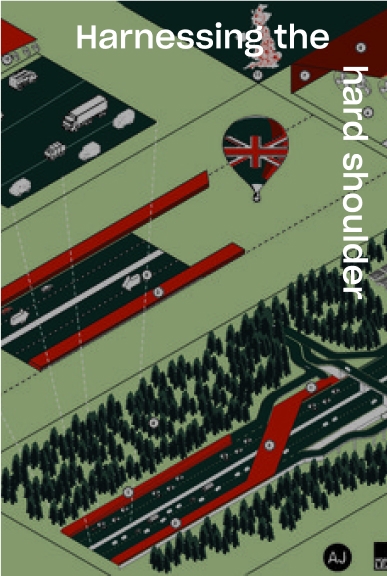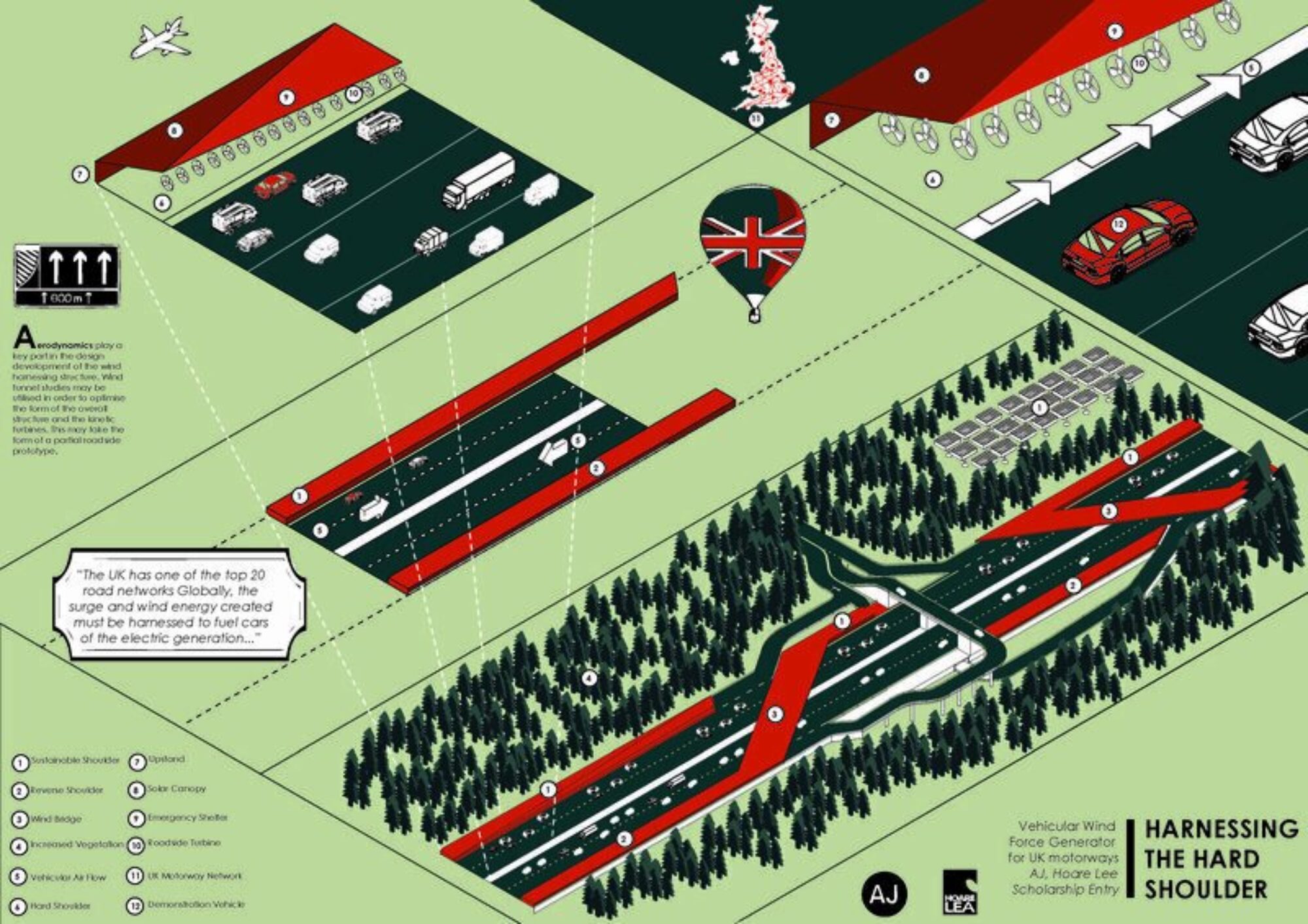
Harnessing the hard shoulder
“When the winds of change blow, some people build walls and others build windmills.”
Samuel Kapasa has been awarded a prize of £2000 plus four full days with a leading engineer at Hoare Lea to develop his winning idea. The proposal aims to harness the wind force generated by motorway traffic for the use of a new generation of electric vehicles.
Many of us will have experienced the moment when for a given reason, the hard shoulder of a busy motorway is used to make an emergency stop. Even whilst waiting within the safety of your vehicle, the immensity and speed of bypassing traffic can cause a temporary air vortex.
This phenomenon is caused by the relative high speed of passing traffic within the motorways slip stream. It was from such an experience, that I began to explore the possibility of harnessing the powerful wind force caused by daily traffic within our motorways.
The UK has one of the top 20 road networks globally; the surge and wind energy created must be harnessed to fuel cars of the electric generation. This can be created through the innovative use of emergency lane spaces that already exist within the vast road network. The hard shoulder should be reinvented to optimise and harness existing wind force. The challenge with larger turbine systems has often been the irregularity of wind conditions.
By utilising a regularly used infrastructure, the architecture can be both sustainable and ambitious.Smaller turbines work within a larger canopy frame structure with a structural strategy to be determined. These generators would be used to support road lighting, signage in addition to electric vehicle charging points at a motorway services location.
The added benefit of the canopy would be the potential use of photovoltaic panels to contribute to the renewable energy generation of the module. This could also provide shelter and connection to an emergency telephone or charging port with regards to motorway breakdowns
The design development would occur as a means of identifying appropriate material and structural approaches towards design. A suitable consideration for cost will also be important due to the vast potential land coverage of such a project. The financial development would support the financial return of an investment in a renewable system, indicating the economical payback period for investors. The system would be designed in modules, each of which would fund the next depending on the payback period and initial investment
The awarded bursary will be utilised in two ways. Primarily, the feasibility of the concept will need to be developed with professional mechanical, electrical and structural engineers. This may take the form of wind tunnel, draft and aerodynamic simulation (much of which is used by staff at Hoare Lee Engineering). Furthermore, the funds would contribute towards a minor mechanical prototype, which will record the impact and feasibility of roadside wind technology. I am highly passionate about the role art and technology play in the sustainable development of our built environment. Architecture has the opportunity to change perceptions. With engineering collaboration, these can be critically developed to become cohesive and compelling proposals. The collaboration of architecture and engineering is therefore paramount to sustainability.
